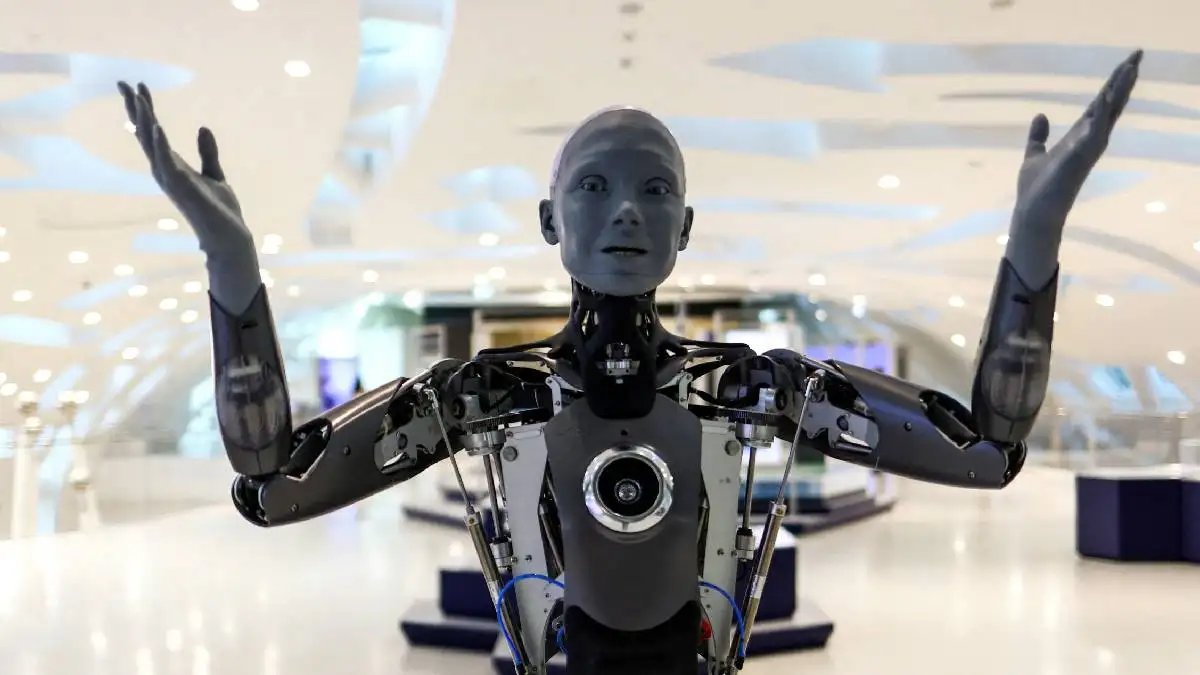- TECHSWU
- Posts
- TECHSWU
TECHSWU


Taiwan's hospitals are revolutionizing healthcare by integrating AI robots, like Nurabot, to combat nurse burnout and enhance patient care. With an alarming nursing shortage projected to reach 4.
5 million by 2030, the implementation of cutting-edge technology is more critical than ever. Nurabot, designed by Foxconn and Kawasaki Heavy Industries using Nvidia's AI, helps alleviate nurses' workloads by handling repetitive tasks such as medication delivery and patient assistance.
This innovative collaboration allows nurses to dedicate more time to meaningful patient interactions, significantly improving care quality. Hospitals like Taichung Veterans General Hospital are leading the way by using digital twins to train these robots effectively before deployment.
As a result, nurses can focus on what truly matters—supporting their patients—while Nurabot takes on the heavy lifting. The future looks promising, with hopes for advanced capabilities in patient interaction and support, paving the way for a more efficient and compassionate healthcare experience.


YouTube has officially cut support for older iPhones and iPads running iOS versions below 16, right before Apple’s much-anticipated WWDC25 event. This means if you’re clinging to these vintage devices, you won’t be able to access the latest features or updates within the app.
But don’t fret—YouTube is still accessible via the Safari browser for those who want to binge-watch their favorite videos! To stay up-to-date with the app, upgrading your device or iOS version is the way to go.

State legislators in Pennsylvania are actively working to encourage the growth of artificial intelligence (AI) companies within the state. By fostering a supportive environment for tech innovation, lawmakers aim to position Pennsylvania as a competitive hub in the rapidly expanding AI field.
This push involves creating favorable policies and incentives to attract talent and investment, which could potentially lead to job creation and economic growth. As the demand for AI technology rises, Pennsylvania's strategic initiatives could pave the way for transformative advancements, making the state a key player on the national stage.
With collaboration between the public and private sectors, the future looks promising for the local AI landscape, creating excitement and opportunity for residents and tech enthusiasts alike.

Digital disruption is shaking up the sports streaming landscape, providing fresh avenues for engagement and influence. In a recent insight piece, David Granger highlights how innovative tech is transforming the broadcasting game, shifting power from traditional media giants to nimble disruptors like Tim Cocke, who recently launched free French rugby streams on YouTube, attracting thousands of viewers.
Meanwhile, Formula One star Lewis Hamilton has emerged as a brand ambassador for tech startups, signaling a convergence of sports and technology. This shift represents a dynamic redefinition of sponsorship and viewing habits, empowering individual influencers over corporate entities.
As grassroots channels and AI-driven platforms gain traction, traditional broadcasters face increasing pressure to adapt. The world of sports is evolving rapidly, making it crucial for rights-holders to stay ahead of this digital wave to thrive in the changing landscape of 2025 and beyond.

Adopting AI in schools is a complex task, and many districts find themselves unsure of how to proceed. To bridge this gap, Common Sense Media has introduced a practical AI toolkit designed to guide schools through the challenges of AI implementation.
Robbie Torney, the organization’s senior director of AI programs, highlights that while some districts excel in using AI, others are just beginning the conversation. Key challenges include managing skepticism among educators and parents, and establishing a clear vision for AI use within the district.
The toolkit provides essential resources, including readiness assessments and leadership frameworks, to help schools develop a solid understanding of AI’s potential benefits. Torney emphasizes that successful implementation hinges on effective communication with all stakeholders—especially families—ensuring everyone feels informed and involved.
As education evolves, this toolkit serves as a crucial step towards integrating AI’s transformative capabilities in classrooms.

Recent polls indicate that residents of English-speaking countries, including the UK, US, Canada, and Australia, are more apprehensive about the rise of artificial intelligence (AI) than those in major EU nations, where excitement around AI's potential runs higher. The survey, conducted by Ipsos Mori with 23,000 participants across 30 countries, reveals a notable lack of understanding of AI, with many fearing its impact on jobs and even trusting their governments less to regulate the technology.
While two-thirds of Britons express concern about AI in everyday products, countries like Thailand showcase a more optimistic view, expecting AI to enhance their job market. This divergence in perspective highlights the interconnectedness of trust in government and public sentiment towards AI, with growing opposition to AI-generated content seen in creative industries.
As AI becomes increasingly woven into our lives, there’s a palpable tension between excitement and anxiety that will shape its future.

A recent report reveals that artificial intelligence (AI) poses a significant threat to jobs across eight key sectors within the next five years. From driving and coding to HR and sales, various roles could be at risk as companies increasingly adopt AI technologies.
For instance, autonomous vehicles may soon replace drivers, while AI tools are already capable of handling basic coding tasks, impacting new entrants in the tech field. The HR sector isn't safe either, with AI recruitment agents on the rise.
Additionally, jobs in restaurants, where robots are beginning to serve food, and branding, where AI could manage social media content, are also vulnerable. As AI continues to evolve, it will undoubtedly reshape the workforce, raising concerns about job displacement and the future of employment in a tech-driven world.
The advancement of AI may very well turn it into a "Bhasmasura," threatening even the roles of those who create it.